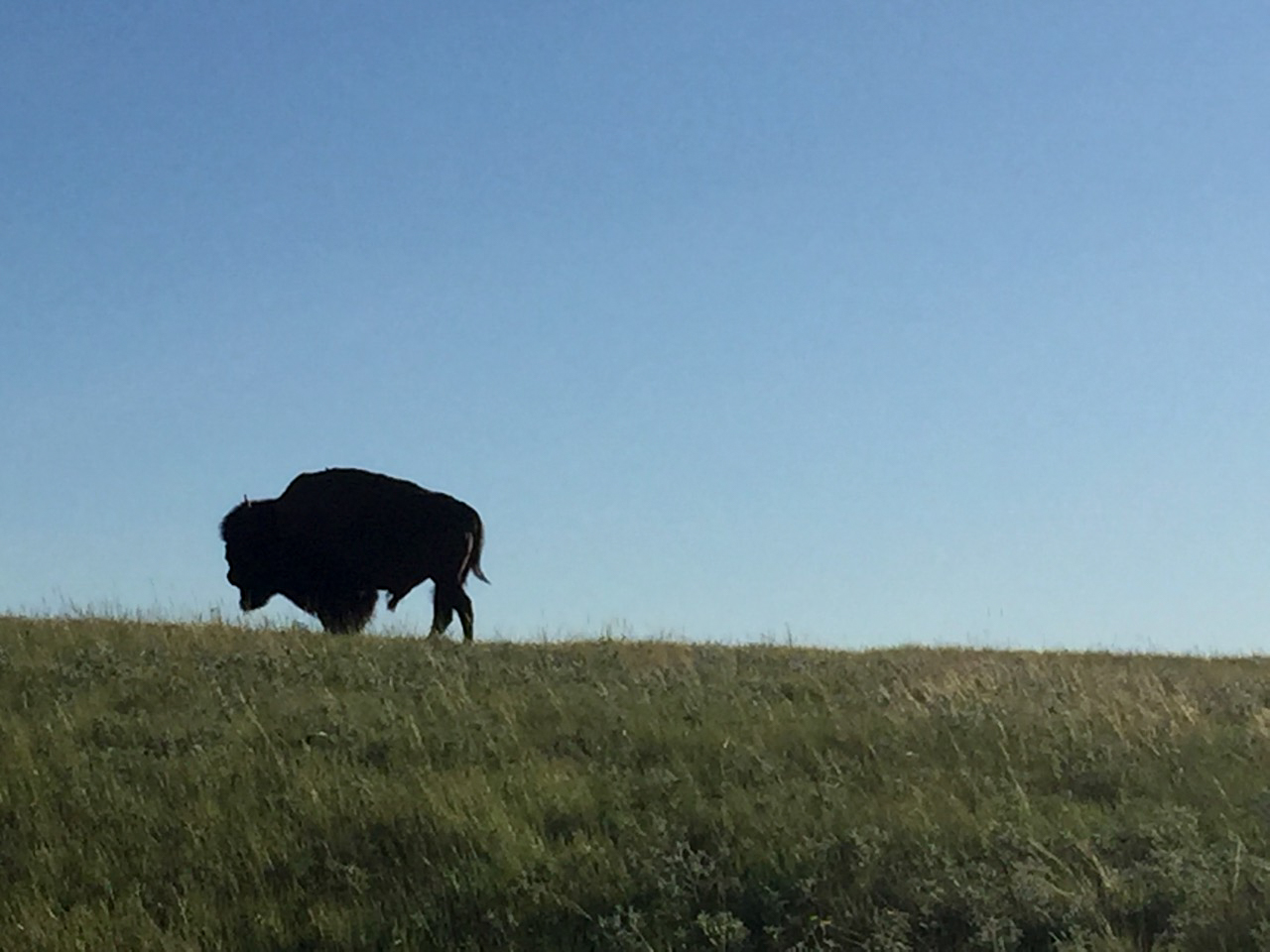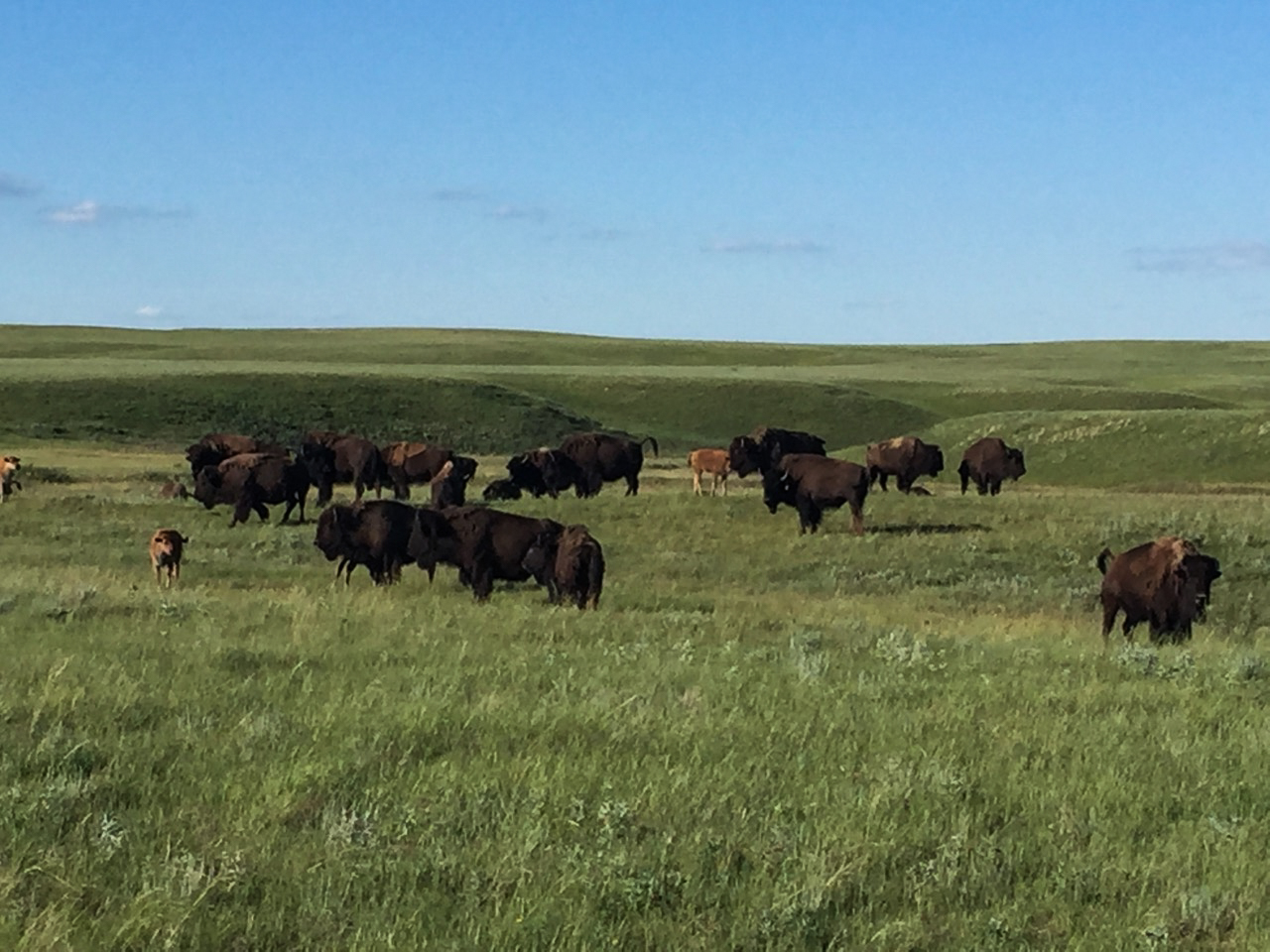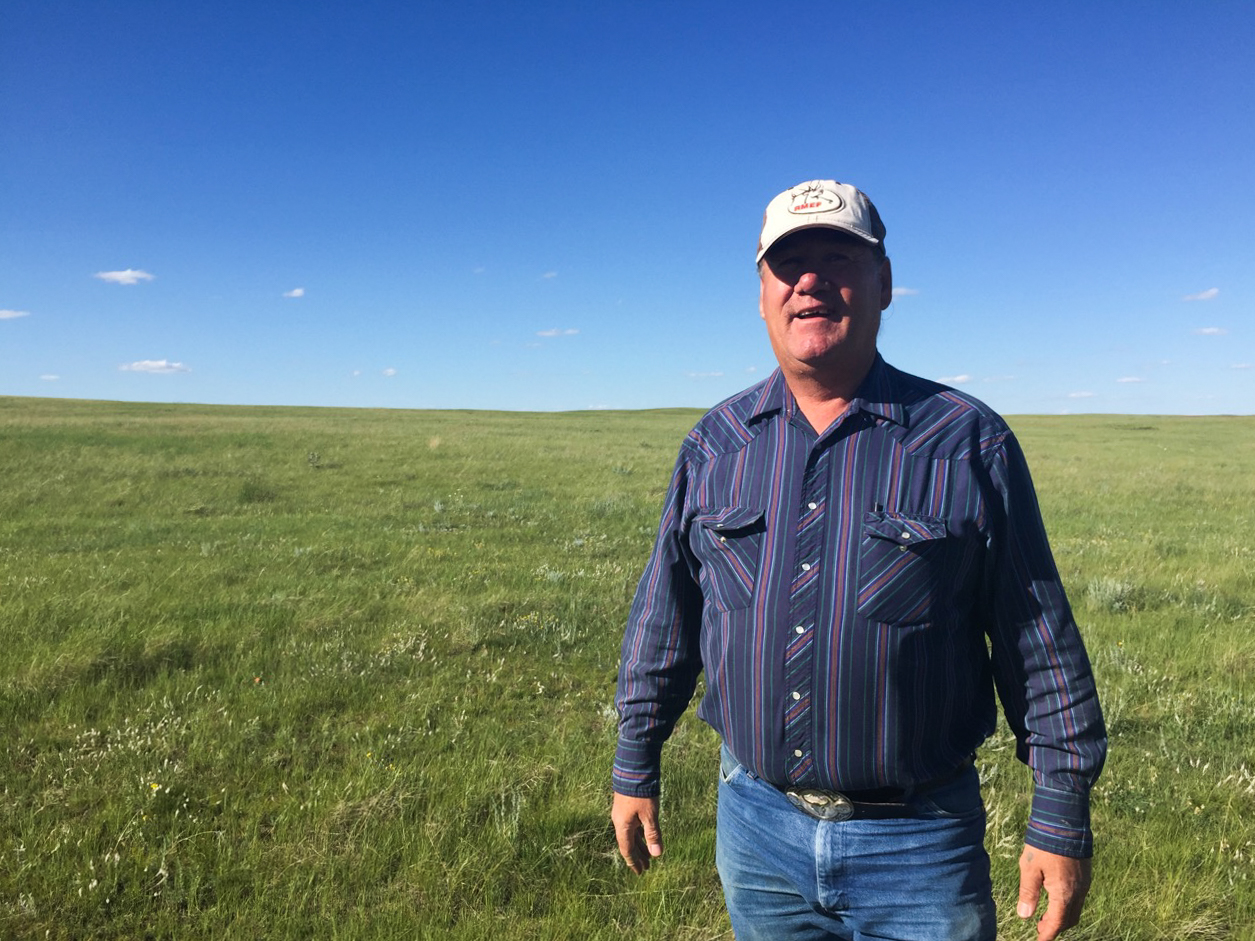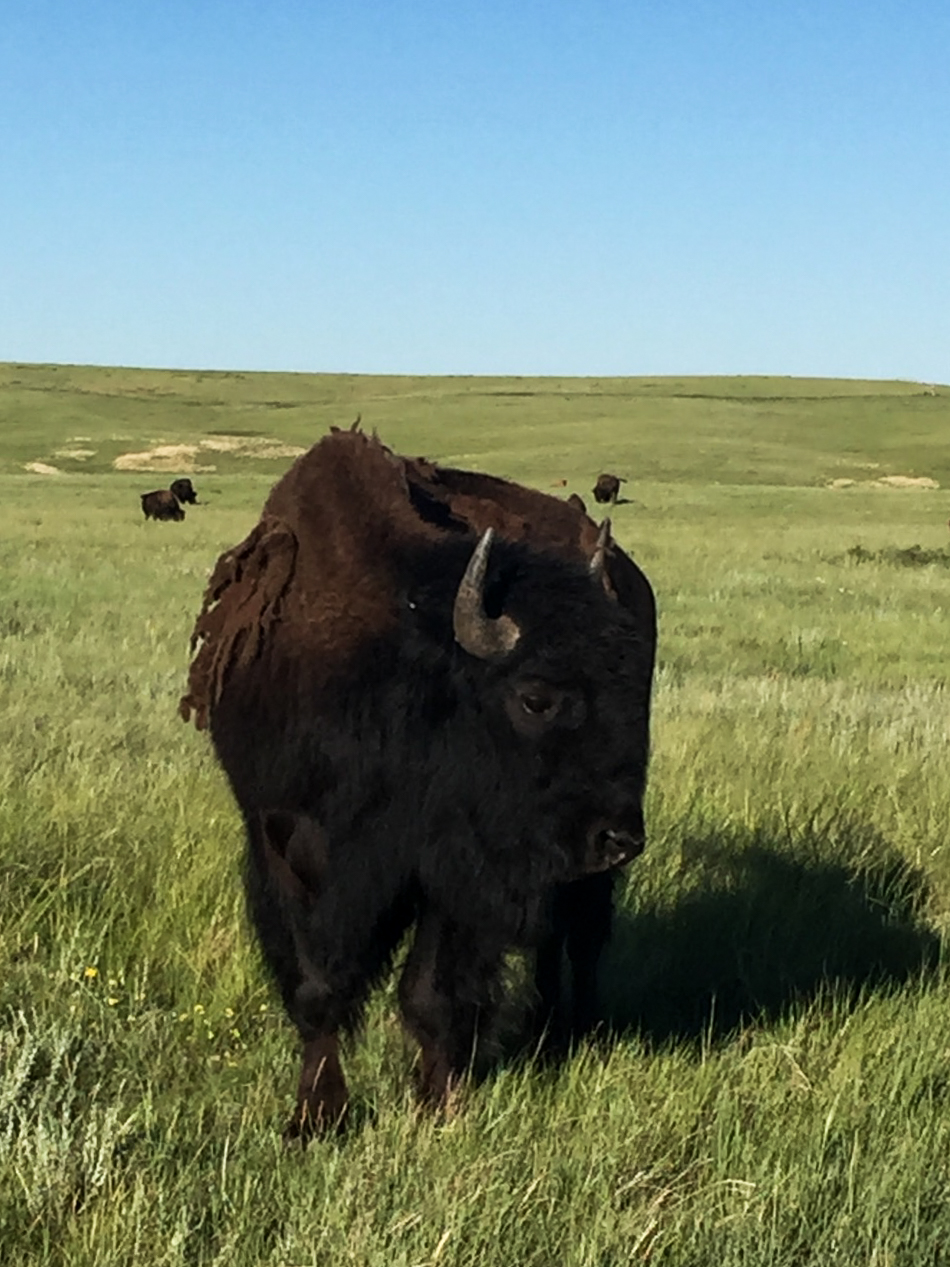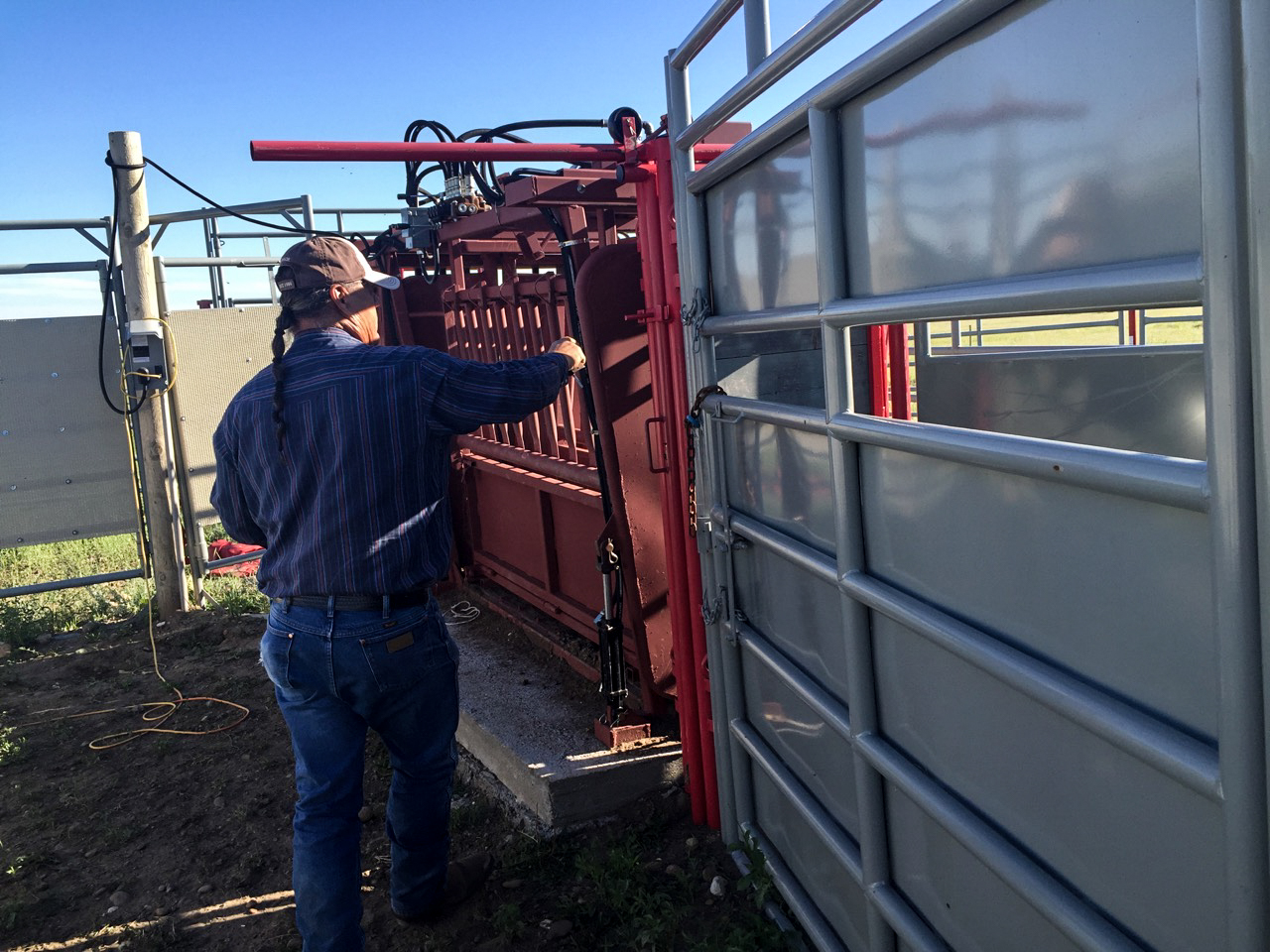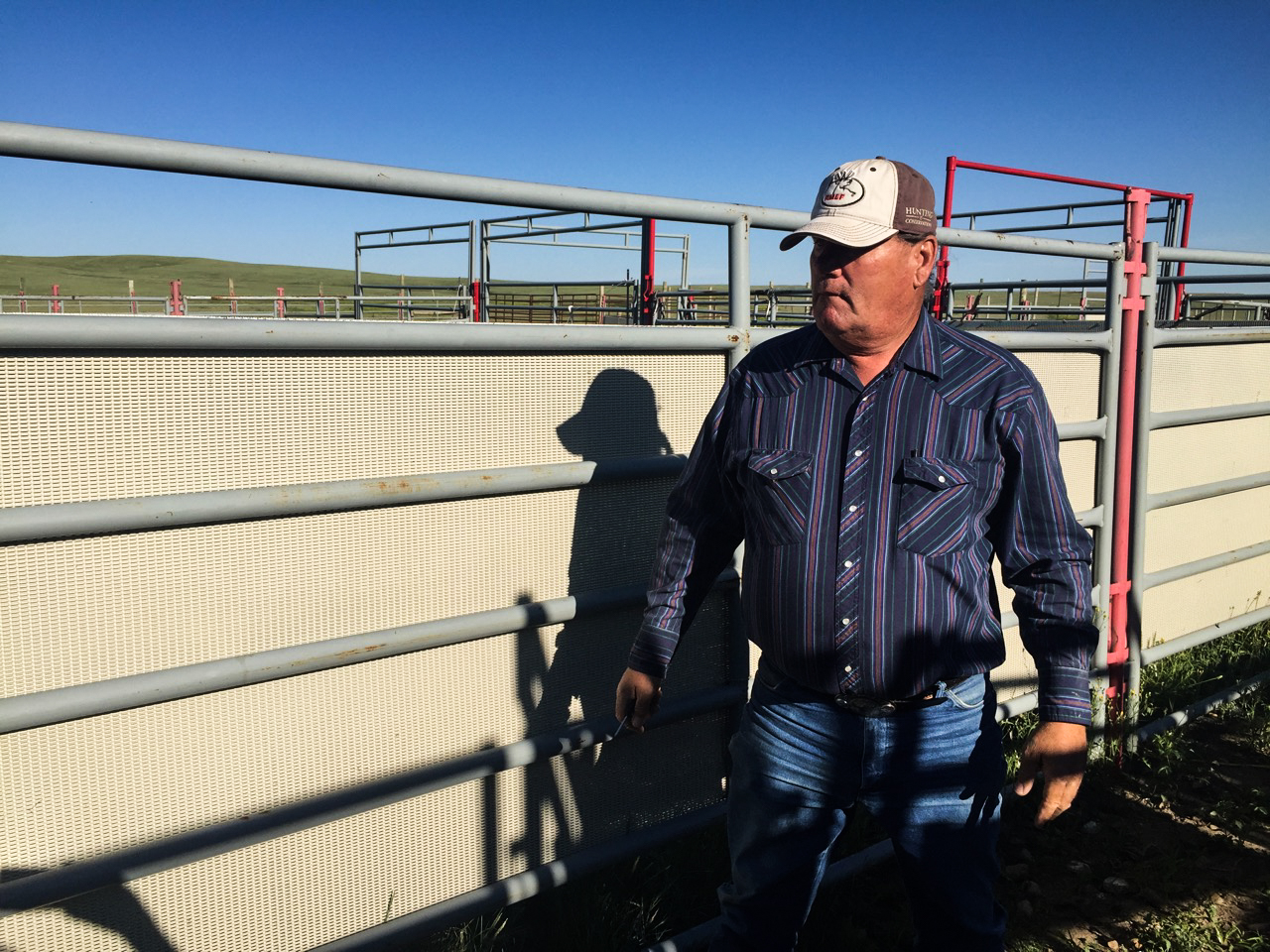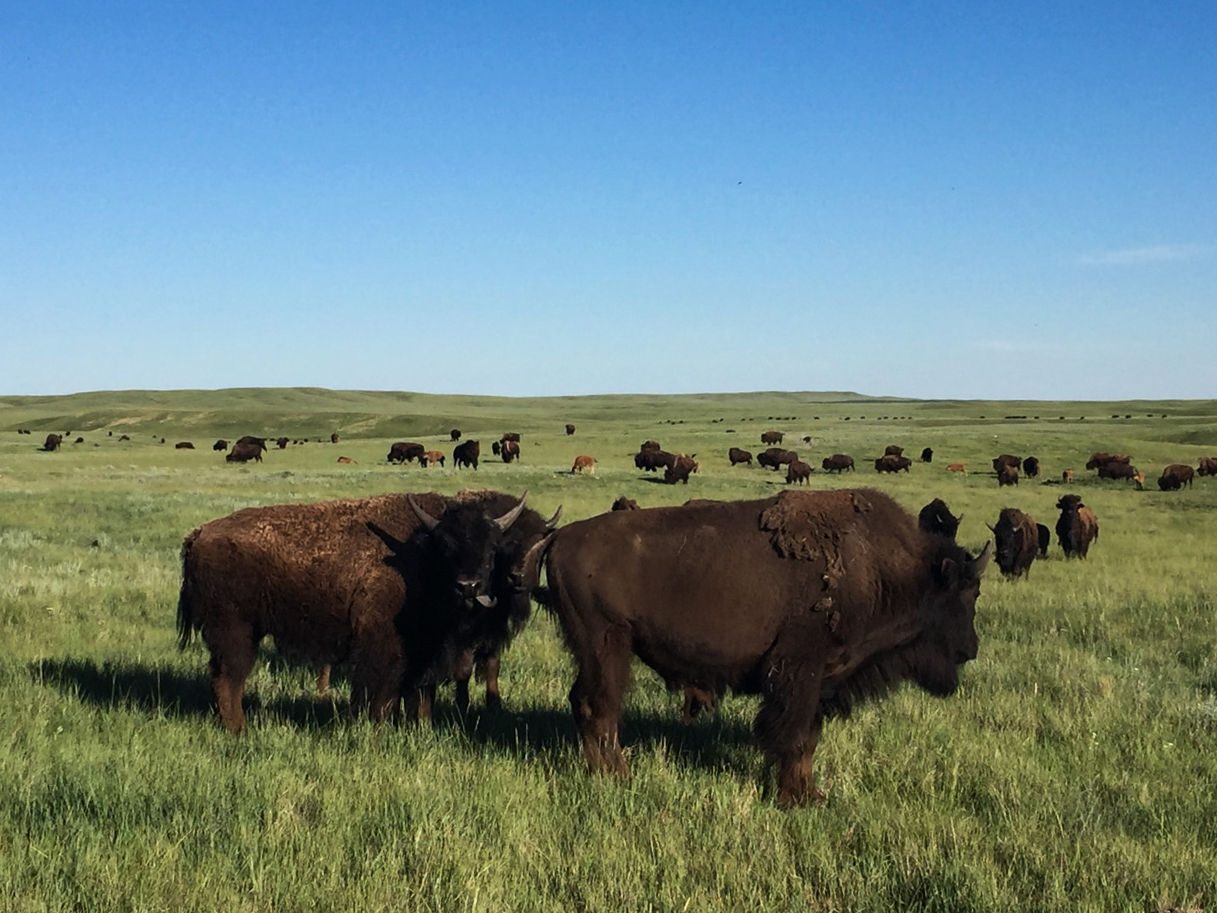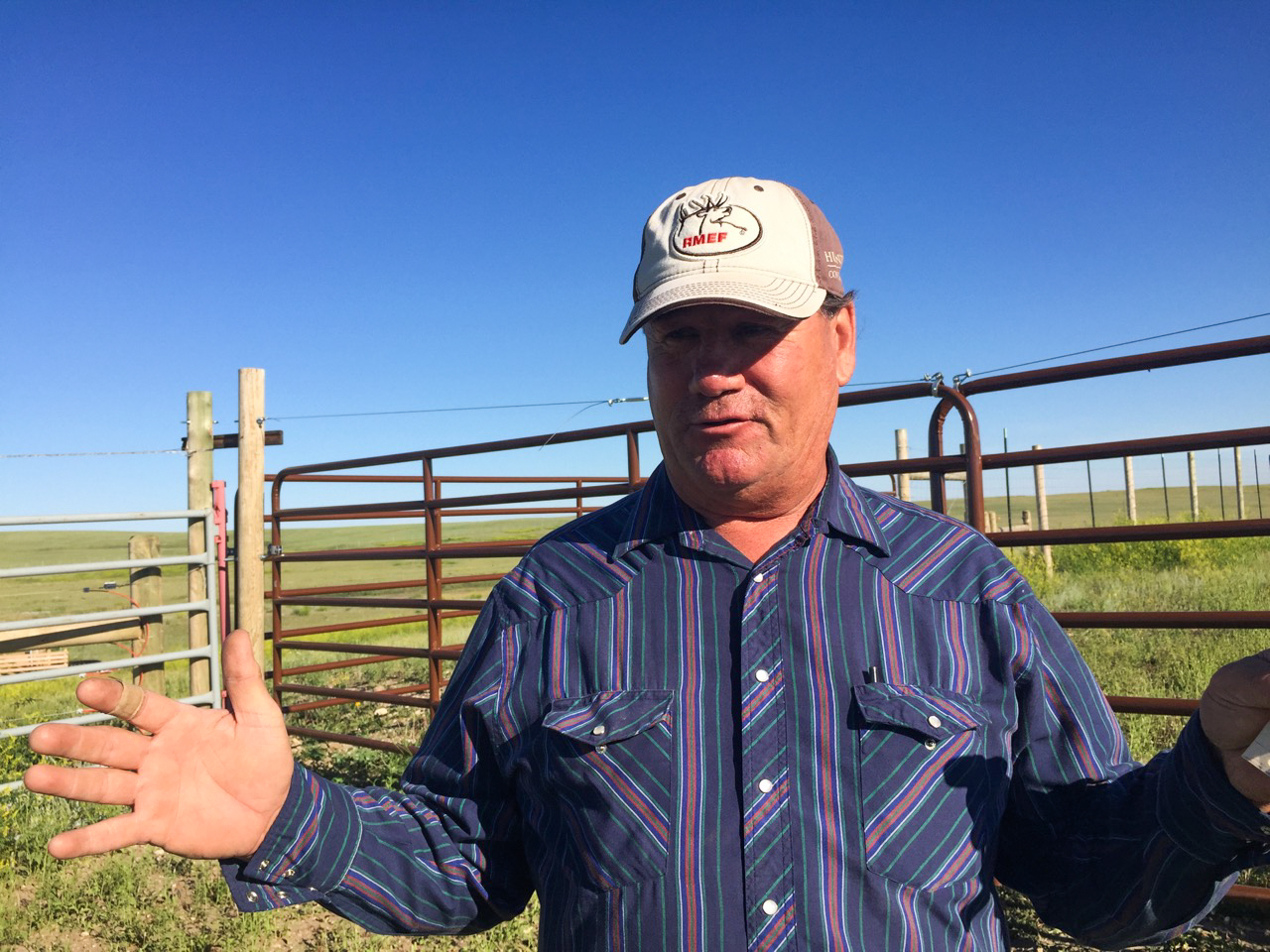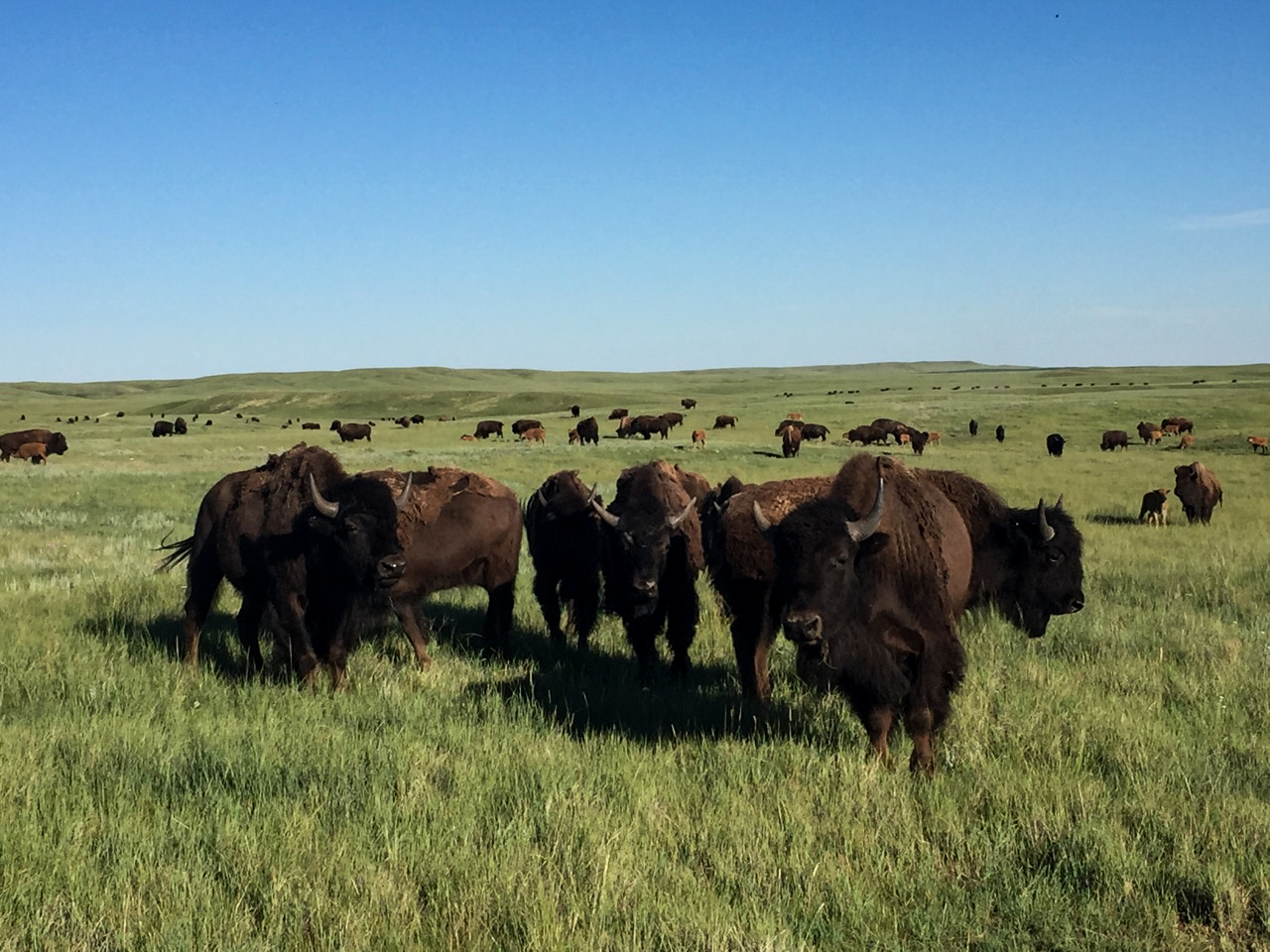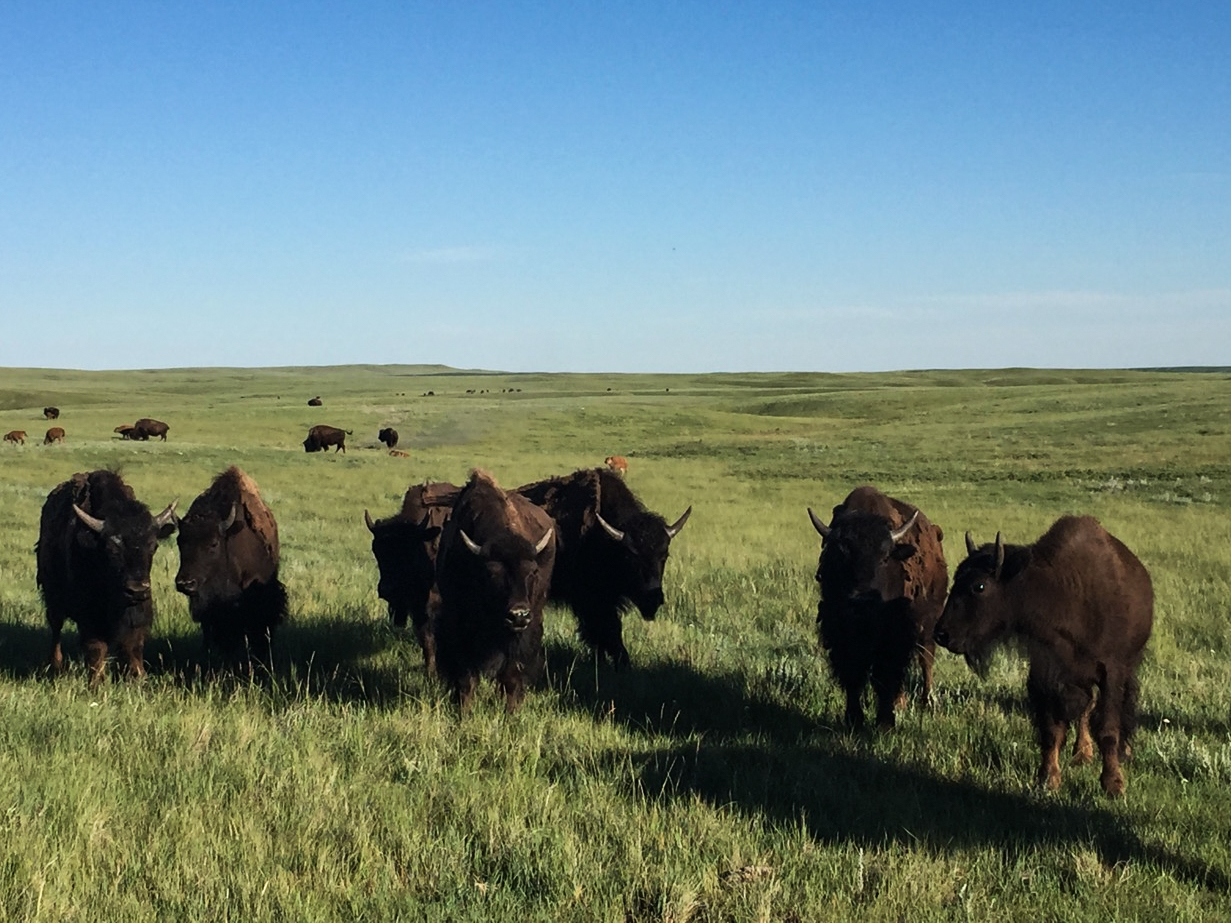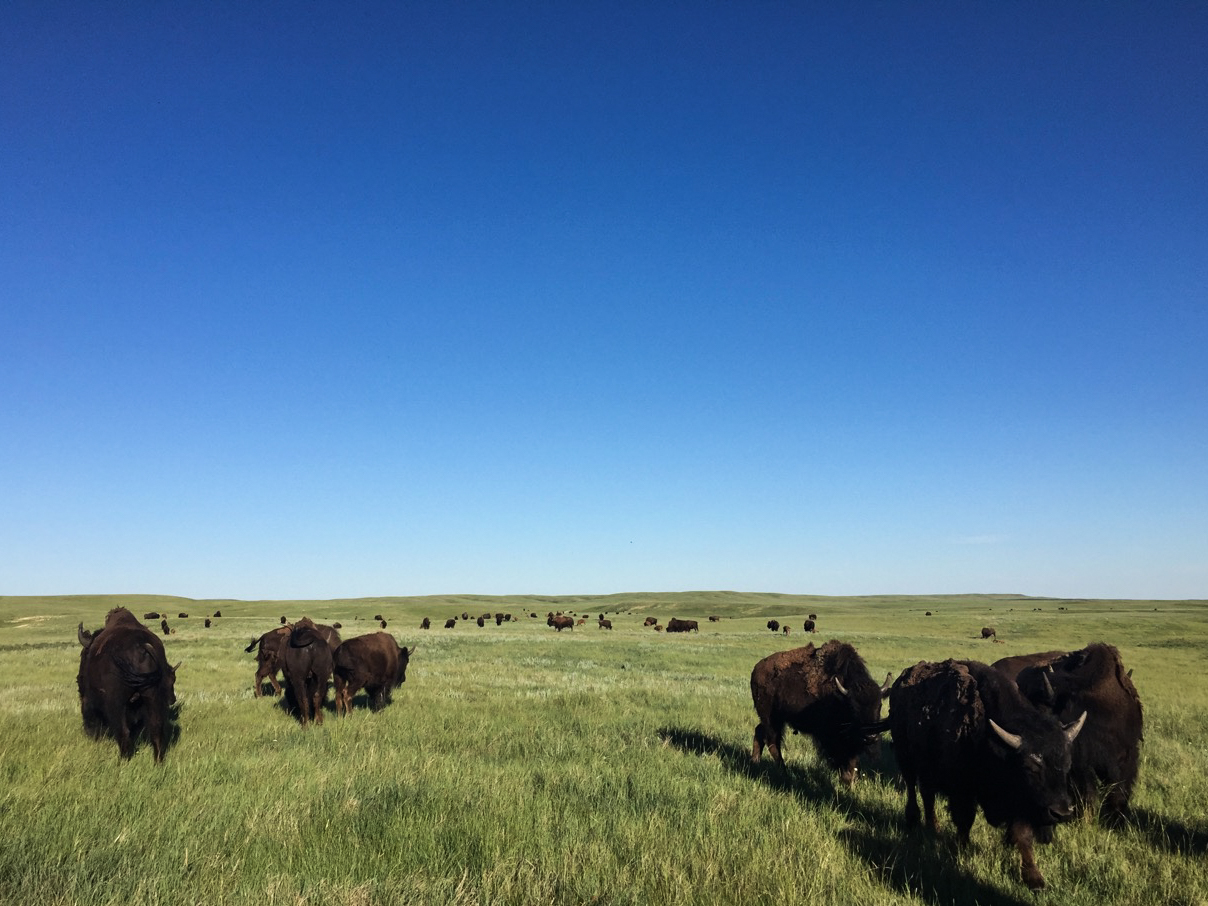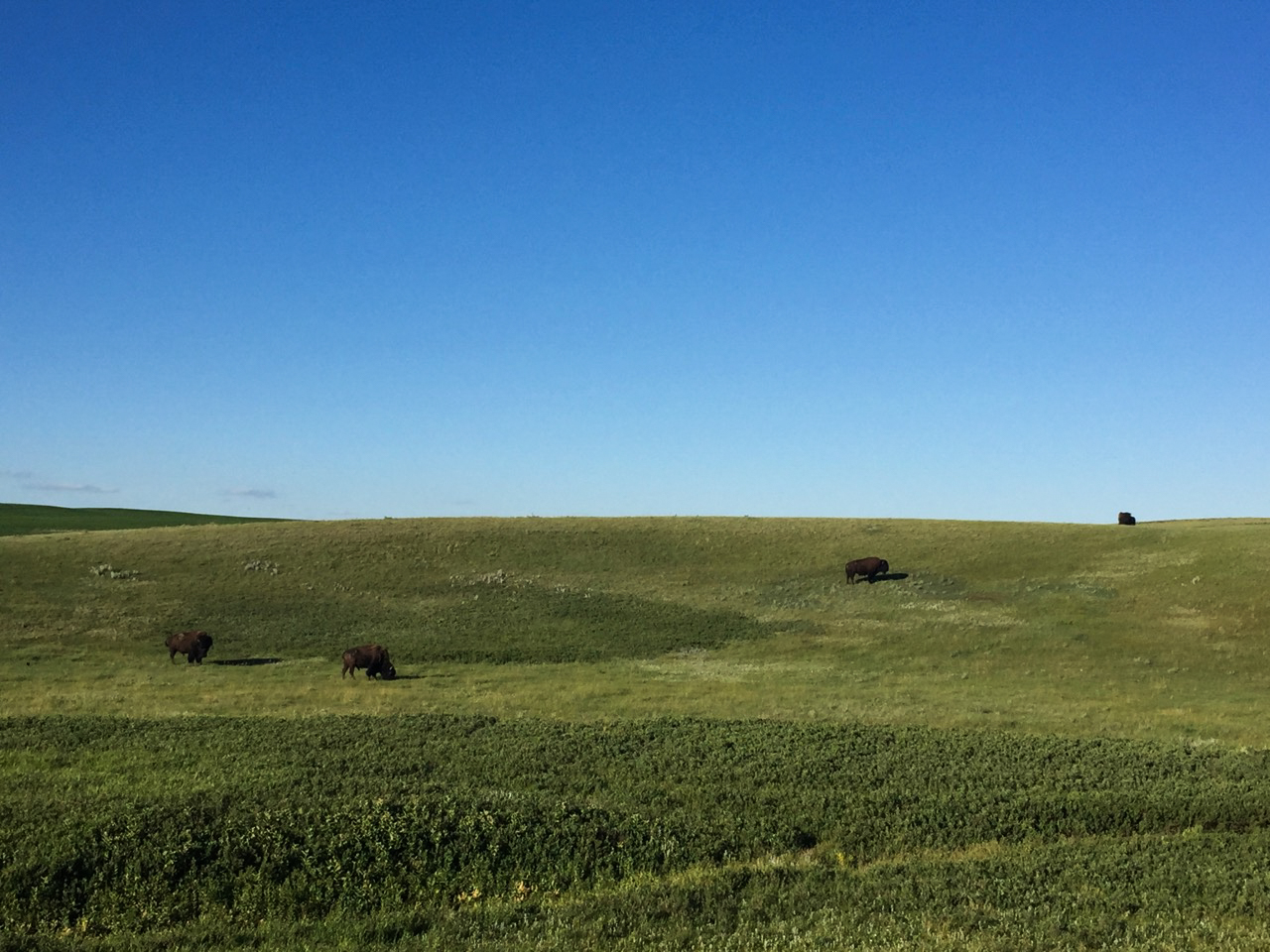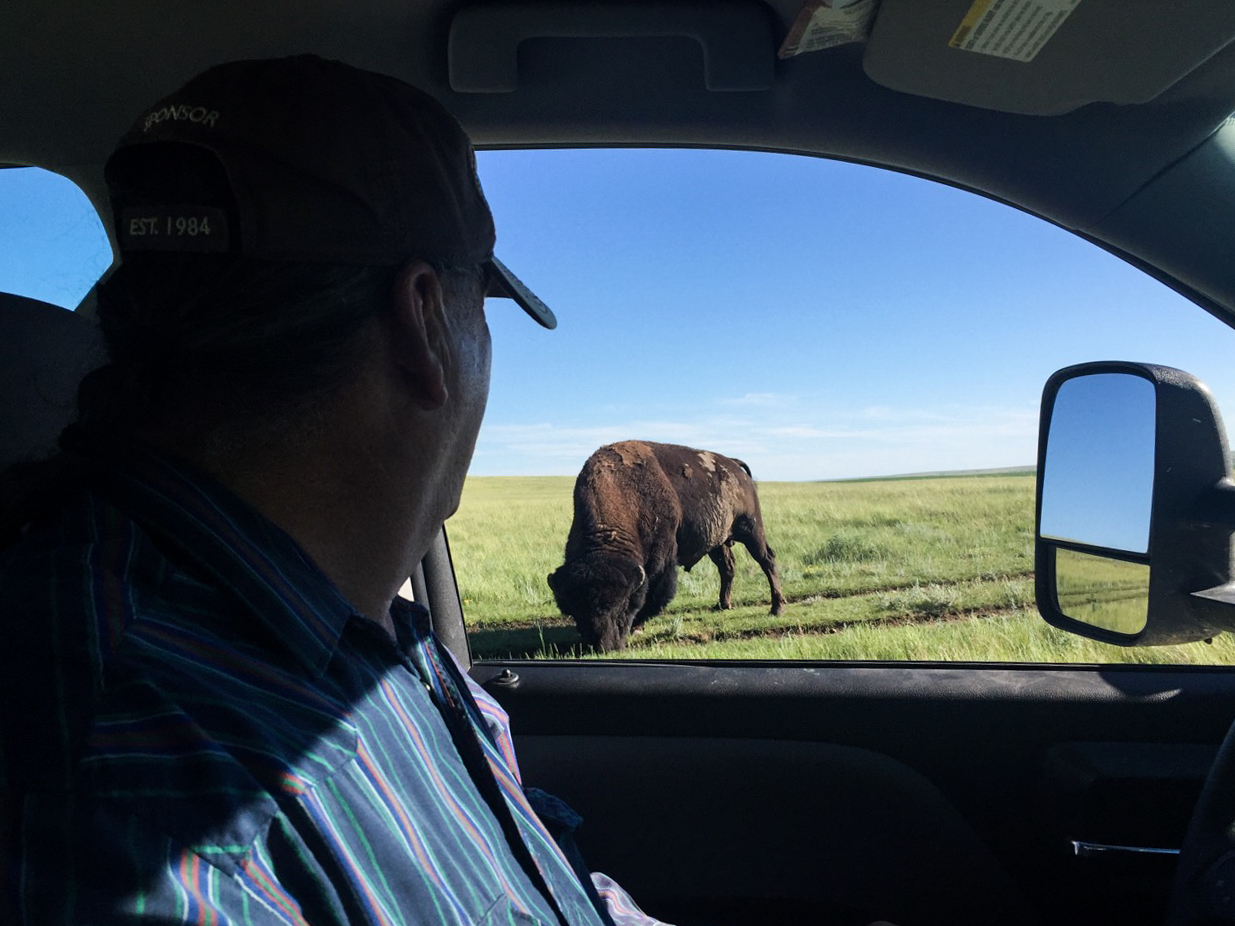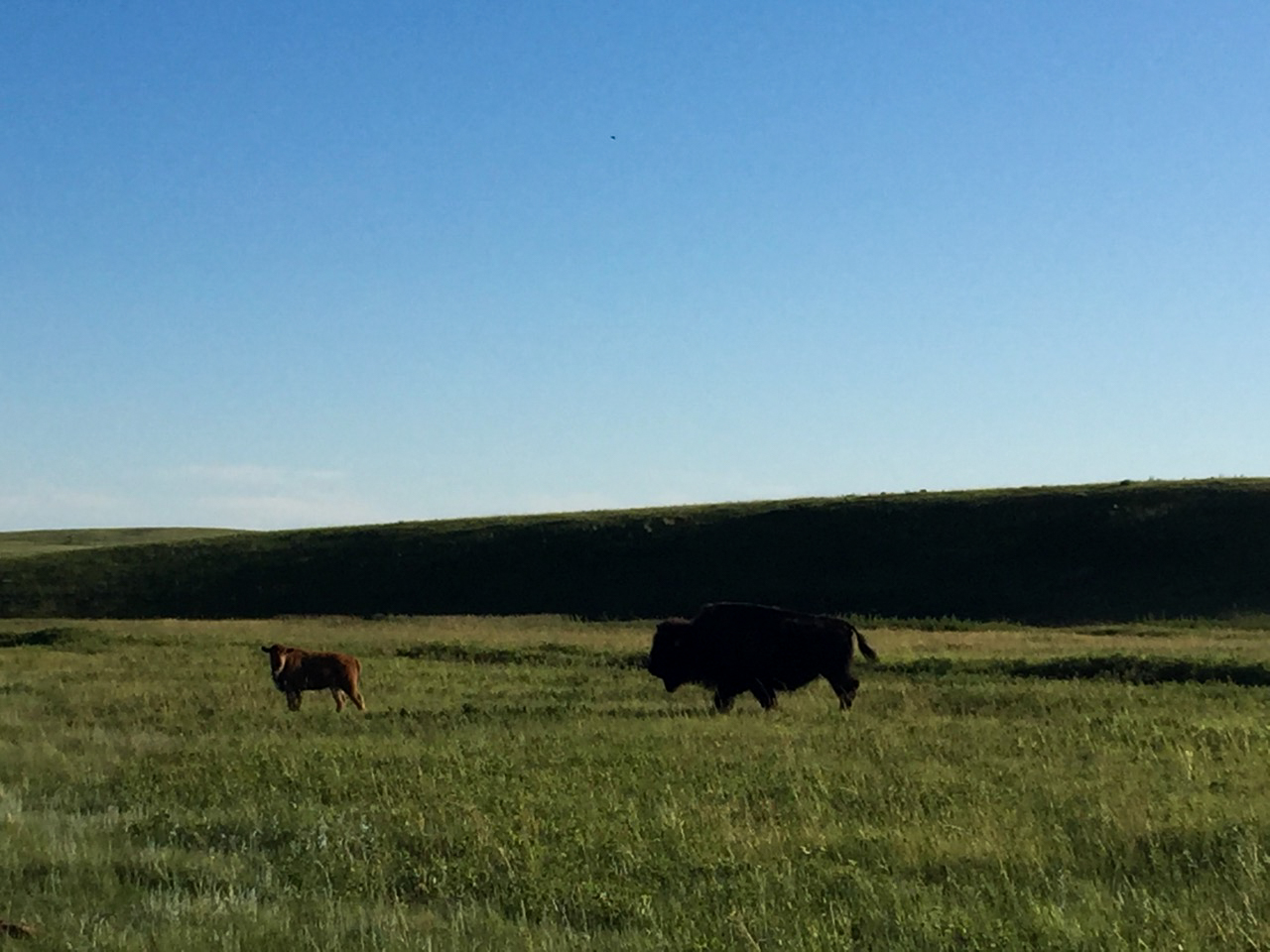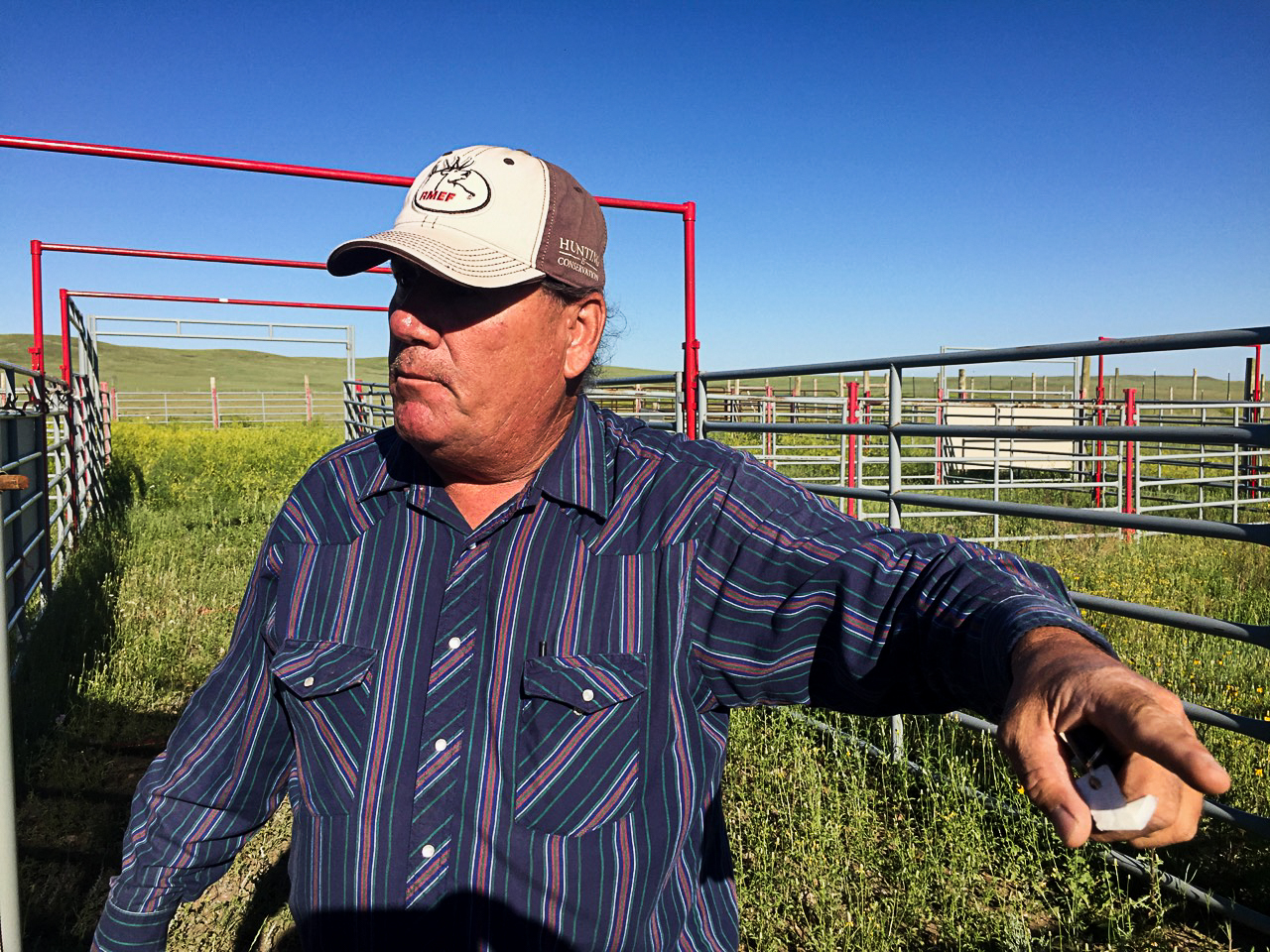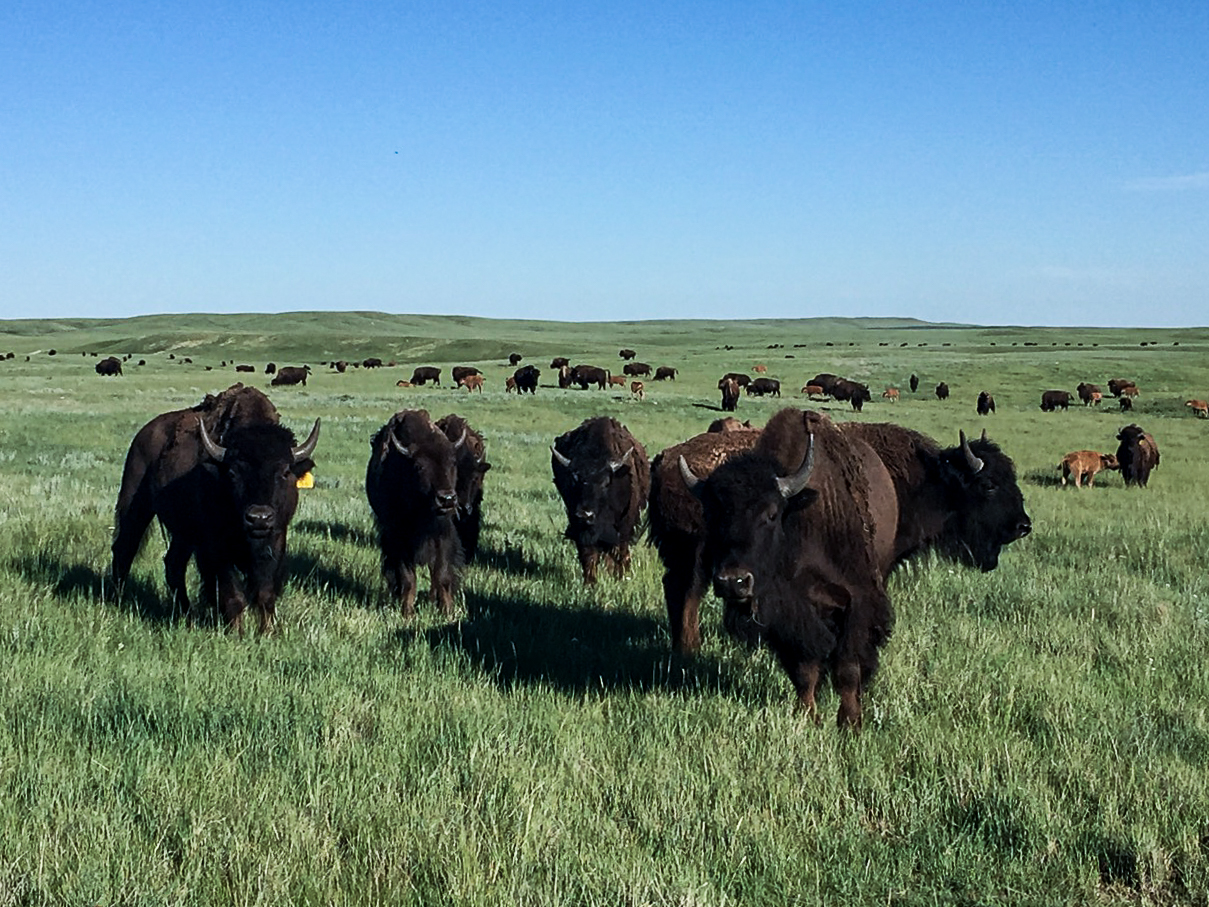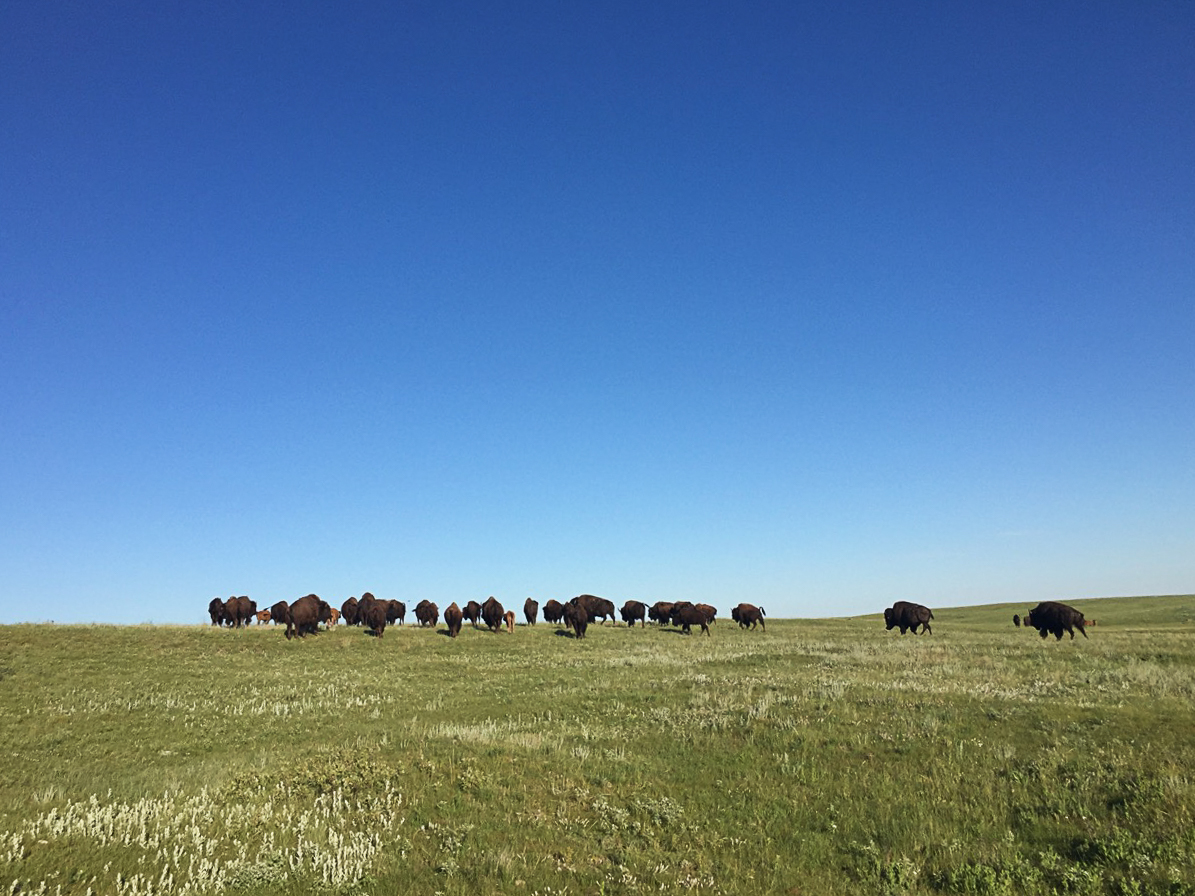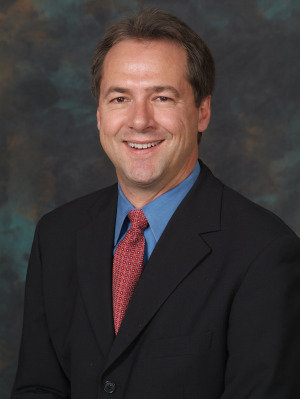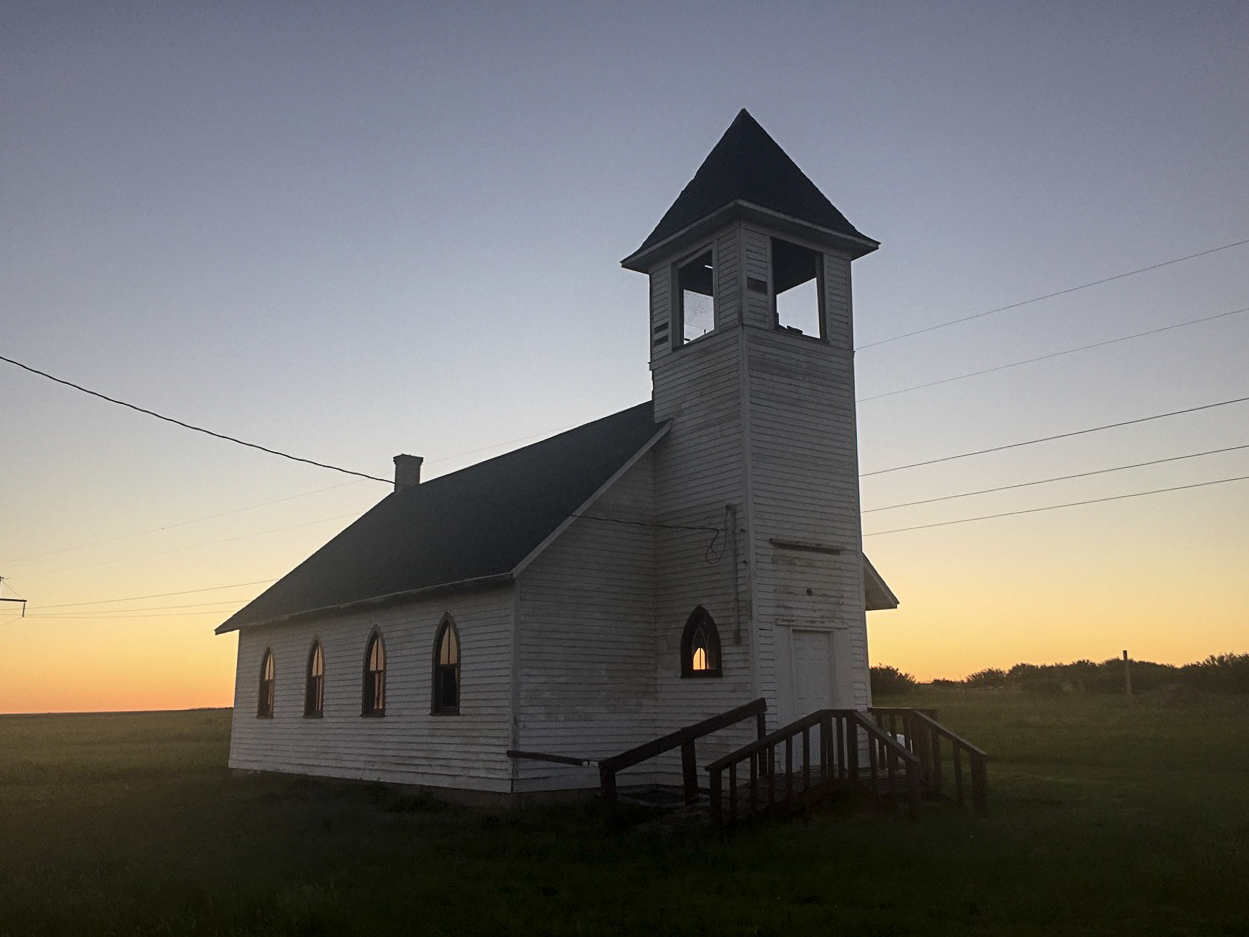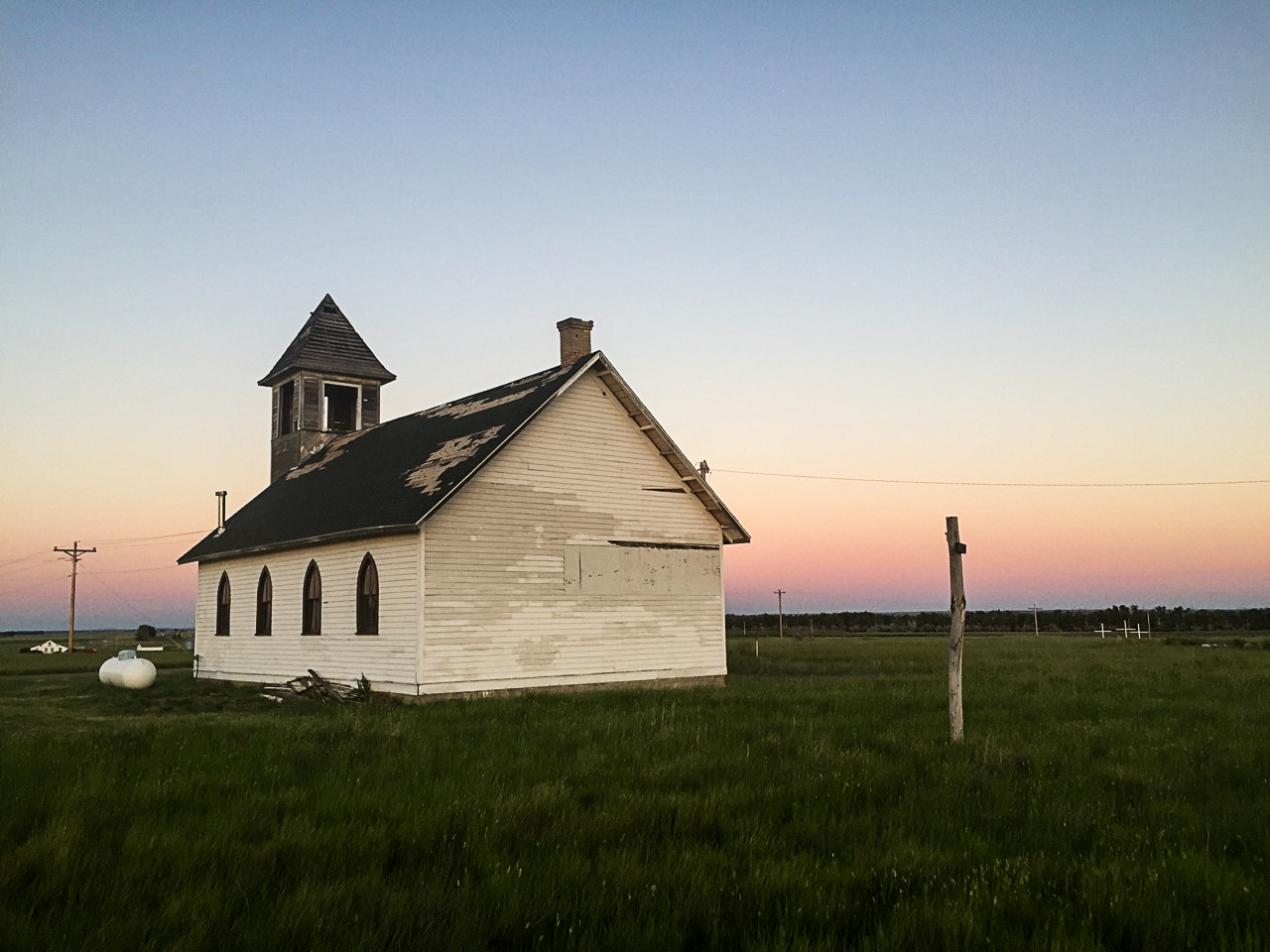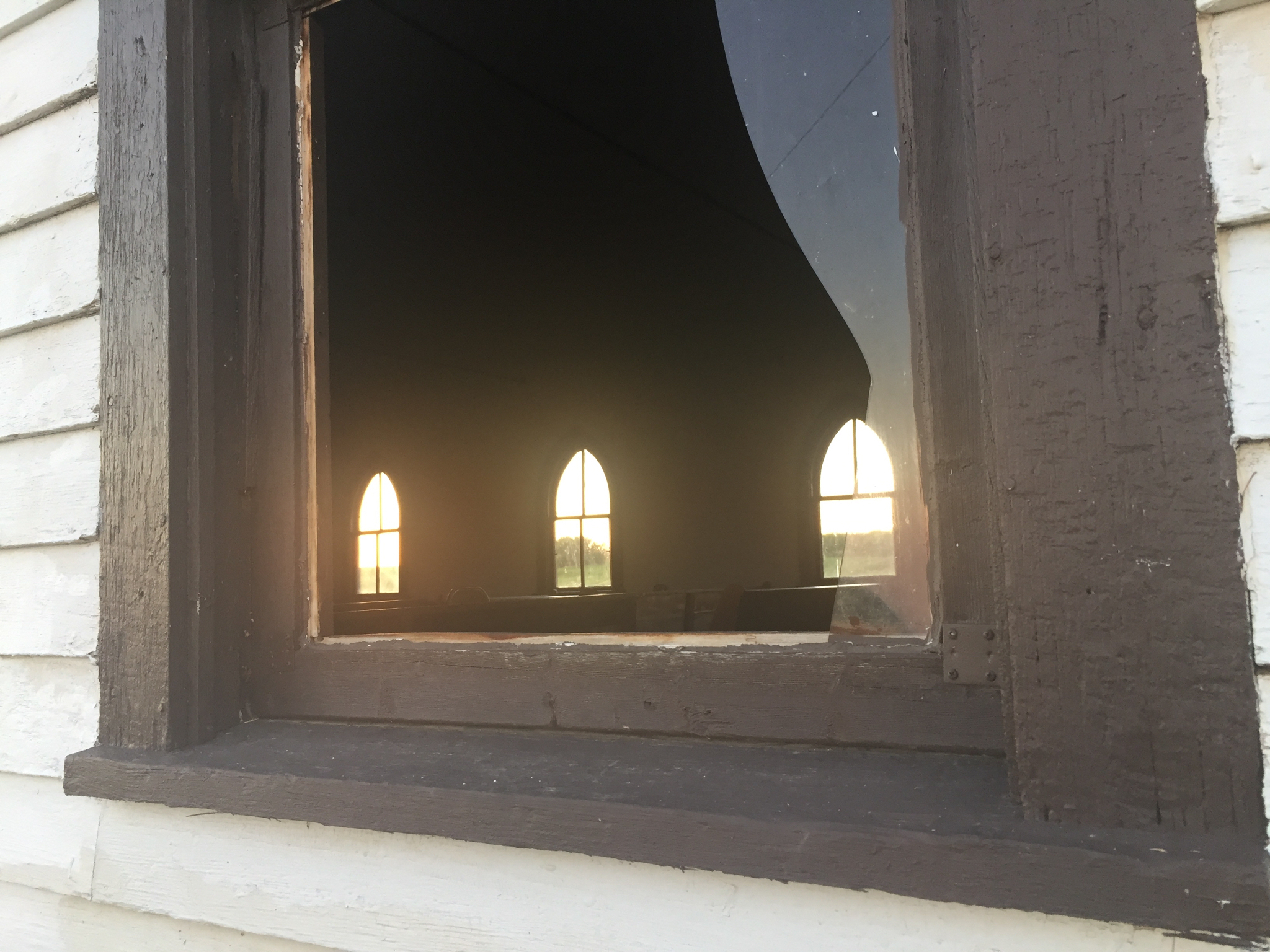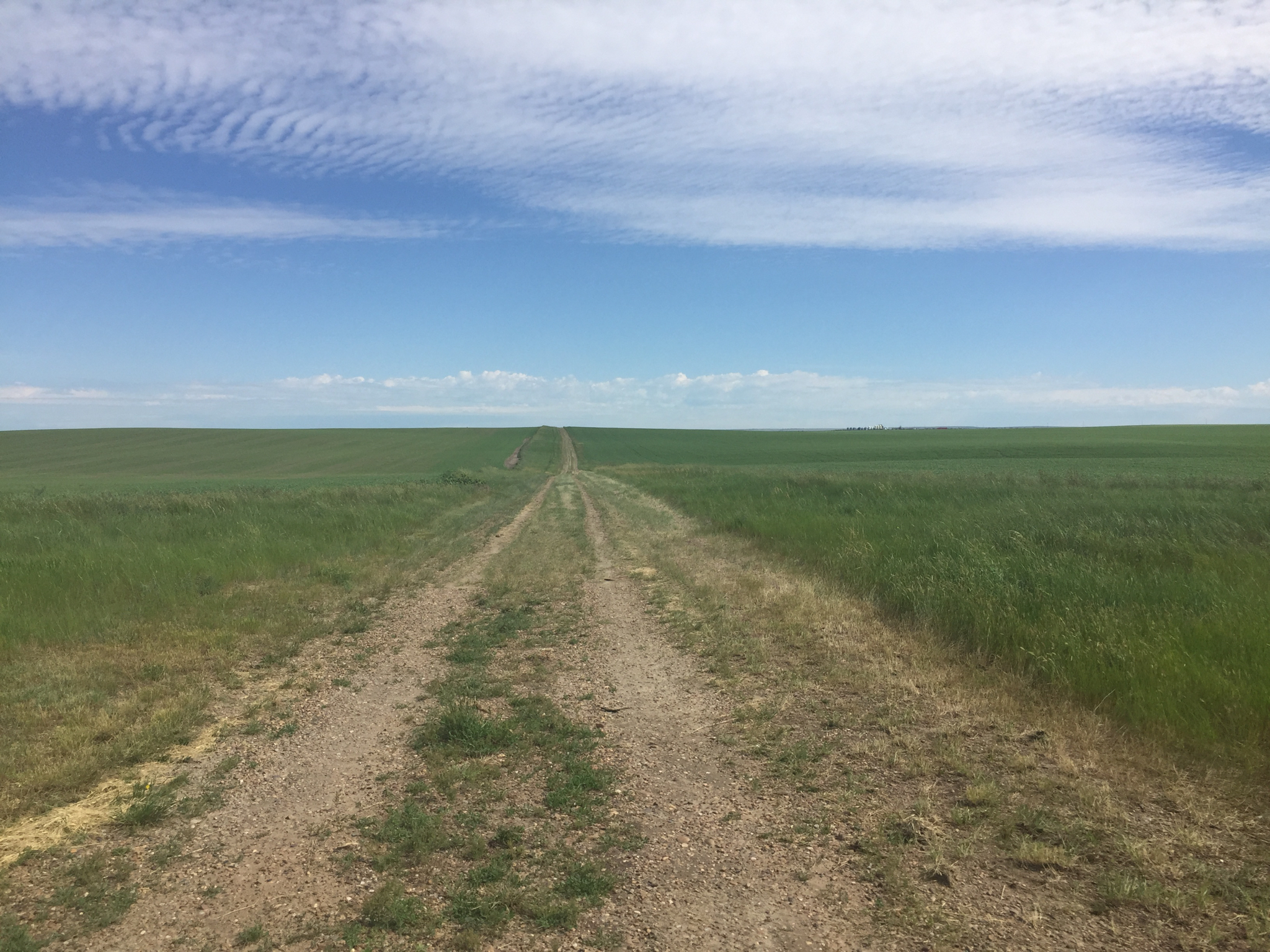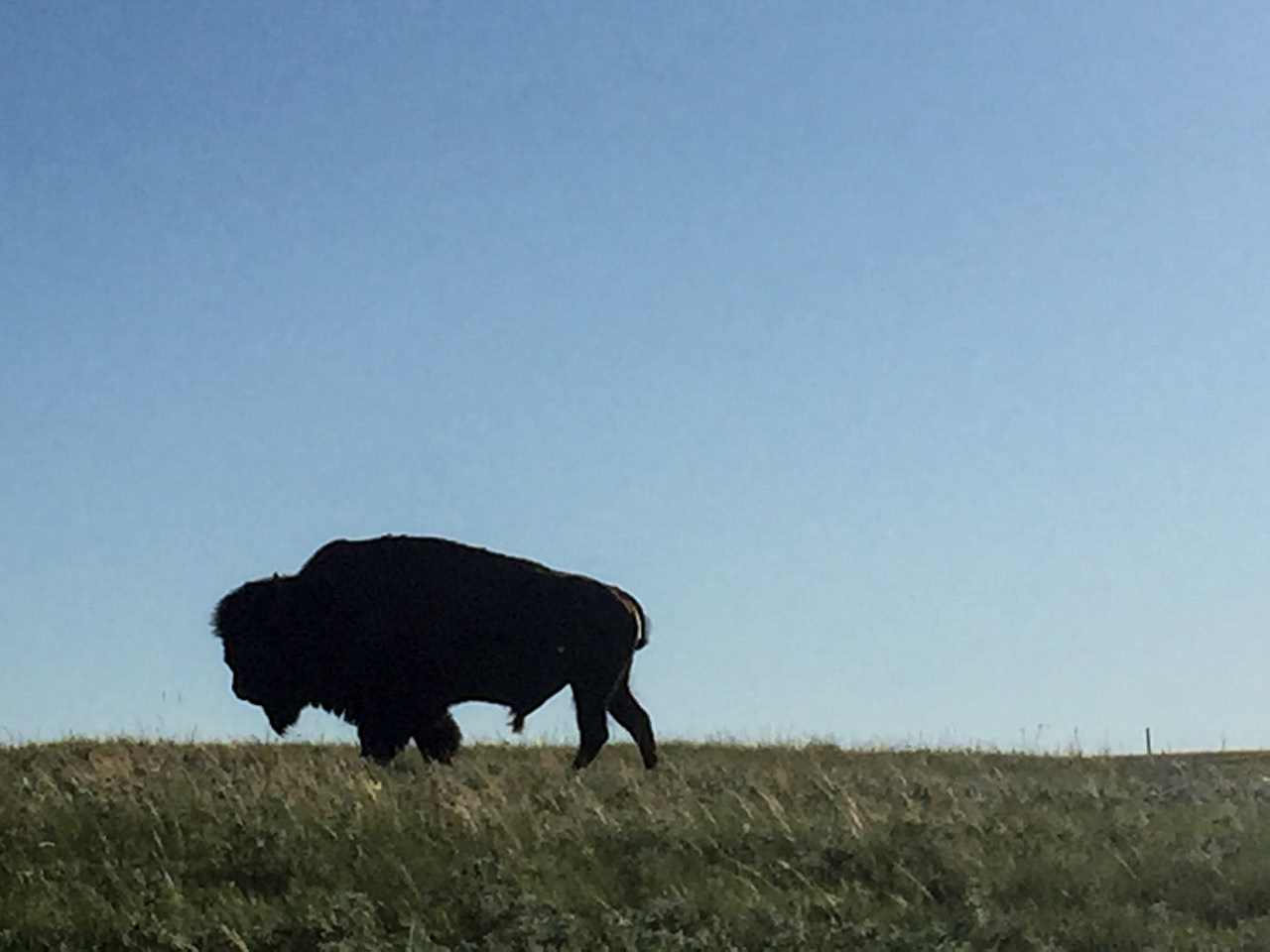Season 1: Episode 4
Tatanka Oyate
In Episode 4, we meet Robbie Magnan of the Fort Peck Tribes. He believes his community can prosper in the future by reconnecting with their roots as the Tatanka Oyate, the buffalo people.
Magnan has built a quarantine facility that could be an alternative to the Yellowstone bison slaughter, but right now it sits empty while more than a thousand bison are being killed from the herd every year. Why? We'll learn more about Magnan's vision for bison restoration, and investigate why some people are opposed to it.
Read More
What's Your Opinion?
If you'd like to share your opinion about the Fort Peck Tribes quarantine facility, you can find contact information for the Interagency Bison Management Plan and Montana Governor’s Office on our page for Episode 1: For the Benefit and Enjoyment of the People.
Our understanding of the process is that the decision on whether or not to use the Fort Peck facility currently rests with the regional director of the National Park Service.
Regional Director, Intermountain Region
National Park Service
12795 Alameda Parkway
Denver, CO 80225
(303) 969-2500
Fort Peck Reservation
You can learn more about the Fort Peck Tribes on their website, and by following the additional links below.
Other Montana Tribes
American Indians 101 and the Essential Understandings Regarding Montana Indians are great places to start if you're looking to get oriented to the Native American communities of Montana. These documents were created by the Montana Office of Public Instruction. Find more tools at their Indian Education for All site.
Video Extras
Credits
Threshold is produced by Amy Martin, with help from Nick Mott, Zoe Rom, Jackson Barnett, Nora Saks, and Josh Burnham. Special thanks this week to Beth Anne Austein. Music by Travis Yost.
Transcript
[00:00] INTRODUCTION
AMY: Do you want me to call you Robbie or Robert in this?
ROBBIE: I go by Robbie. The reason I don’t like the name Robert – my mom would call me that when I was in trouble.
AMY: Welcome to Threshold, I’m Amy Martin and this is Robbie Magnan.
AMY: Is that a coyote out there, do you see that?
ROBBIE: Yep.
AMY: Robbie is the director of the Fort Peck Tribes Fish and Wildlife Department. He was born here on the Fort Peck reservation, which is way up in the north-east corner of Montana.
AMY: How far are we from Canada now?
ROBBIE: Where we got off is 26 miles.
AMY: Oh, we’re that close.
ROBBIE: Yeah.
AMY: Wow.
AMY: Life is not easy on the Fort Peck reservation. According to the U.S. Census Bureau, 41 percent of people who identify as Native American here had incomes that fell below the poverty line last year – almost three times the poverty rate of Montana as a whole. And life expectancy for Native Americans across the state of Montana is 19 years shorter than for whites – that’s from a report by the Montana Department of Public Health and Human Services. You can find these kinds of statistics on many reservations. But the numbers don’t begin to tell the whole story. There are thousands of Native American people working hard to bring health and prosperity to their communities. People with ideas, and energy, and optimism. People like Robbie Magnan.
ROBBIE: Buffalo’s always been part of our economy, and it can be part of our economy again.
AMY: Do you feel hopeful for the buffalo?
ROBBIE: I do. ‘Specially when the federal government turned around and finally names them our national mammal. That’s the best thing that could ever happen. It reassured me that people do care. And when you get just a few people, it’s gonna build and build. It’s gonna be great.
AMY: In episode two of this first season of Threshold, we talked about how the destruction of bison was, at least in part, a strategy used to weaken Native people. And it worked, for a while. But Robbie says the reverse is also true, and that now it’s time for tribes to restore bison as a way of rebuilding their strength.
ROBBIE: Our Indian’s name’s tatanka oyate. Buffalo people.
AMY: Oh... can you say that again?
ROBBIE: Tatanka oyate. And we follow the ways of the buffalo, we’re the buffalo people. And again, we learned our structure of our life is based on the same what the buffalo do.
AMY: So if you don’t have them, it’s like, you’re not just missing a food source and everything else. You’re missing this major teacher.
ROBBIE: Exactly.
AMY: And this isn’t just theoretical for Robbie. Here, in this very remote part of the country, the Fort Peck Tribes are innovating – they’ve already restored bison to their reservation, and they have all sorts of plans for expansion. One of those plans could virtually eliminate the Yellowstone bison conflicts. But, it’s being blocked from moving forward. We’re going to dig into that issue in the second half of this episode. But I want to start by getting a sense of how the world looks through Robbie’s eyes. What does it mean to him to follow the ways of the buffalo today?
ROBBIE: Buffalo has taken care of Native Americans since the beginning of time. And now the buffalo need help. So as a Native American I feel it is our responsibility that we put a hand to help them. To pay back the favor.
MUSIC: THRESHOLD THEME
“We’re talking about bison conservation in a modern context. It’s all about the future.”
“Our children are like buffalo born behind a fence- they don’t know the extent of our aboriginal territory.”
“The federal government won’t do their part by standing up and doing what they need to do.”
“It’s up to us to say, ok well how are we going to do this?”
“If we actually let science guide a big piece of this, that will help.”
“There are some really reasonable next steps to take, but that this point we’re just speculating. We don’t know what’s going to happen because we’ve never tried.”
[03:47] SEGMENT A
SOUND: Birds chirping
AMY: Robbie Magnan’s a big guy, 62 years old, with a long salt-and-pepper braid trailing out of the back of his farmer’s cap. I met him in Poplar, a town of around 900 people on the edge of the Fort Peck Reservation. The Missouri River winds its way east toward North Dakota just outside of town, and Highway 2 – also known as the Hi-Line – runs right through it. The Fort Peck Reservation is huge – more than 2 million acres of high, rolling prairie – so Robbie and I have a lot of time to talk as he takes me up to see his bison herd.
ROBBIE: Ft. Peck Tribes is the home of the Assiniboine and Sioux people. This is originally Assiniboine country. And after the Battle of Little Big Horn, Sitting Bull and his band come up here taking off back to Canada and some stayed here.
AMY: “Sioux” is kind of an umbrella terms that covers several tribes and many bands. So, Fort Peck became one home for a portion of the Sioux. And Robbie says most tribal members at Fort Peck are a mixture of Sioux and Assiniboine now – the two groups speak a related language, and there’s been a lot of intermarriage.
ROBBIE: The Siouxs call the Assiniboine’s stone cookers. Because what they do is get a hide, and dig a hole in the ground, and put that hide there. Put your meat, and turnips and stuff in there, and they’ll heat rocks, and put one rock at a time in there and cook it slowly. Time you got to your seventh rock, your soup was done. And that's how the Sioux’s call them there, the stone cookers.
AMY: Robbie’s one of those fascinating kinds of people who doesn’t fit into any neat categories. He served in the military, has worked as a police officer, and he’s also a natural historian – as you’ll hear, he’s full of interesting information about bison, and this landscape. And he has strong entrepreneurial instincts, too. And woven throughout all of this is his knowledge of tribal history and culture. His connection to those roots is strong now, but he says it wasn’t always this way.
ROBBIE: When we was growing up in boarding schools, no one wanted be Indian. Everyone wanted to be the cowboy. Because the Indian was always the bad guy.
AMY: You were sent to a boarding school?
ROBBIE: Yeah, I went to boarding school in South Dakota.
AMY: How old were you when you got sent there?
ROBBIE: I was 12 years old.
AMY: Beginning in the late 1800s, Native American children were frequently separated from their families – sometimes by force – and enrolled in boarding schools, with the intention of cutting off ties to their indigenous cultures. Lots of people have painful memories of being taught to feel ashamed of their heritage at these schools.
ROBBIE: Indians were forbidden to speak their language to where the government tried to wipe out the Indian and save the man. And it just doesn't work. And now the last 20, 30 years people are just now becoming proud of who they are.
AMY: And Robbie says that bison are a key part of that process.
AMY: So when you grew up were there any buffalo here?
ROBBIE: No, I was almost 14 years old, when I was in Denver, Colorado at the zoo. That’s when I seen my first buffalo.
AMY: That's kind of crazy thinking about you grew up here and this is absolutely prime buffalo habitat, and you're Native American, and you didn't see buffalo ‘till you're 14, and it was in a zoo in a big city.
ROBBIE: Kind of an odd experience.
AMY: Yeah, how did that feel when you're a little 14-year-old guy.
ROBBIE: It didn’t really affect me, because I didn't really know our culture that much. Because it’s taboo before...You know our parents were even told, “you don’t talk about that,” you know. The government prohibited...children were taken away and sent to boarding school. So you’ll forget about your culture. And I still have a lot of misgivings the way we teach our kids in school now a lot of things have happened in history that we don't talk about. And I think our history needs to be told the real way. This was...the federal government massacred them because they figured out that was the only way to bring the Indians down to their knees, it was to destroy their economy. And that's why they were almost wiped out. And people need to let people know, that’s the real reason. You know, it’s history that’s been done. We can forgive. But to deny the truth – see this guy’s gonna play king of the road up here.
AMY: Robbie cut himself off there, because we’ve just come upon our first bison of the day. What he said there was: this guy’s gonna play king of the road. It’s a huge bull, hanging out by himself, looking relatively unimpressed by the fact that Robbie’s truck is rolling right toward him.
AMY: He is big. How much do you think he weighs?
ROBBIE: About 2,300 hundred pounds
AMY: Wow...(laughs)
AMY: We keep winding up through the hills of the reservation, and the road goes from gravel, to dirt, to no road at all. It’s just lush, green prairie in all directions, as far as the eye can see.
SOUND: Footsteps on gravel
AMY: It’s so pretty up here!
ROBBIE: All this rain made everything nice and green.
AMY: Yeah!
AMY: Robbie says the Fort Peck tribes first reintroduced bison in the year 2000.
ROBBIE:...and they were reintroduced after a 139-year absence from this reservation.
AMY: Robbie was part of that project, and he’s been leading it ever since. They’ve gone from 100 bison to more than 500 today.
ROBBIE: With the tribes reintroducing buffalo, since the buffalo played a very important role in Native American culture. A lot of our traditional ceremonies are coming back since they’ve been here. And it’s rejuvenated a lot of things on this reservation since they’ve been back. Whole bunch of bulls there…(laughs)
AMY: Oh yeah! All speckled around.
AMY: As we’re watching, one of the bulls flips its enormous body upside down and rolls back and forth, kicking up a cloud of dust. It’s called wallowing.
ROBBIE: I have ranchers saying well, they destroy the ground when they wallow. What they’re doing is when it rains it creates these little water pockets for your smaller birds to have water.
AMY: Ah...
AMY: Robbie says these wallows the buffalo make have helped to bring back a small songbird to the reservation, the Sprague’s Pippit, which is listed as a threatened with extinction in Canada, and vulnerable in the United States.
AMY: What was the name of that bird again, Sprague’s…
ROBBIE: Sprague’s Pippit, yep. It’s a greyish bird. We got a lot of them, and them ones with the curved...curlew. It’s kind of crazy when it’s deep snow here, you can see the buffalo they use their big heads of all that snow and they’ll graze some and they’ll move on. But if you watched, and where they walked away deer populations come, and the snow’s cleared out for ‘em, and they’ll eat the grasses. And if you still watch it, bird populations that stay here year round, they are getting the gravel off the ground that the buffalo cleared. So what the buffalo’s doing is creating more food for other species. And again, mother nature's best tool is the buffalo. It helps all the other wildlife.
AMY: And Robbie says the buffalo are doing a lot to help the people too.
ROBBIE: When we brought the buffalo back, everybody started talking buffalo. And just that, started bringing our people pride again. And now our community college even call themselves now the Fort Peck Tribes Buffalo Chasers.
AMY: Oh nice, is that a tribal college?
ROBBIE: Yeah, it’s just brought everything...positive around here.
AMY: Robbie often takes school groups on tours to see the bison, and in the fall of 2015, they had their first buffalo summit.
ROBBIE: It was a week summit. And we put up 15, or no, it was 20 tipis we put up out here and each tipi had a different classroom on buffalo history. Cultural uses, traditional uses, how they use the habitat, all different classes.
AMY: Close to fifteen hundred kids from schools on and off the reservation ended up taking part in the summit.
MUSIC
AMY: And these educational programs are just one part of how the Fort Peck Tribes are using buffalo to create new opportunities. They’ve divided their animals into two herds, a cultural herd and a business herd. The cultural herd is the bigger of the two, with more than 350 animals. The business herd has around 180 animals, and every year, they issue around 25 hunting permits to non-tribal members for this herd.
ROBBIE: I’ve had hunters from Australia, South Korea or Germany. A lot of people in eastern states.
AMY: Last time, we talked about the bison hunt happening on the borders of Yellowstone, which would be hard to describe as a fair chase. Robbie says the hunt is different here.
ROBBIE: Because the buffalo run – basically, in our business herd we run it on 13,000 acres. And when you hunt you actually gotta stalk ‘em, and these people learn very quick, it's not that easy. Because if they see you, boom. They're gone.
AMY: Permits range in price from 1,000 dollars all the way up to 10,000 dollars apiece. And there are so much demand for them that they have to take applications and then have a drawing to select the winners. And Robbie has other ideas too. He wants to build some cabins up here, which he could rent out to hikers, hunters, and educational groups. And then there’s carbon credits. Much of buffalo pasture is native prairie – it’s never been plowed – and Robbie says some companies have expressed interest in paying the tribes to keep it this way, to compensate for their carbon emissions. So that’s another way that bringing back the buffalo can make a real impact on the tribe’s bottom line.
AMY: You’re kind of an entrepreneur it sounds like.
ROBBIE: No, I’m a dreamer. I come up here and think of things like that (laughs).
AMY: I’m not sure there’s a big difference between an entrepreneur and a dreamer (laughs).
AMY: And Robbie has another dream too. It’s more than a dream, really. It’s a plan, a project that he’s already tested, and proven to be successful. And, it could prevent the slaughter of hundreds of Yellowstone bison every year.
ROBBIE: It’s a win-win situation.
AMY: So, why are some people fighting this idea? We’ll have more after this short break.
Break
[14:00] SEGMENT B
AMY: Welcome back to Threshold, I’m Amy Martin and I’m with Robbie Magnan, director of the Fort Peck Tribes Fish and Wildlife Department, driving into a 320-acre pasture surrounded by high fences.
SOUND: Gate chain rattling
ROBBIE: We’re officially now in the Fort Peck Tribes buffalo pasture.
AMY: Like many Native Americans, Robbie is very troubled by the fact that hundreds of Yellowstone bison are being shipped to slaughter almost every year.
ROBBIE: Instead of massacring these animals when they migrate out of the park in the wintertime when they’re hungry, OK, let’s get ‘em out alive and start other cultural herds going.
AMY: That’s the core of Robbie’s plan – use brucellosis-free Yellowstone bison to help herds get started in other places.
ROBBIE: Instead of killing them in the springtime, bring them here, and we will test them. And after they gone through the required times, and still clean, then we will help other state organizations, federal organizations and tribes that want to have genetically pure buffalo from Yellowstone – we can give ‘em.
AMY: This is called a quarantine process. And I just want to do a quick clarification about that word, “quarantine.” It’s confusing, because it is used to mean two totally different things in the bison world. The first kind of quarantine is what we were talking about in our last episode. That’s quarantine for cattle after they’ve tested positive for brucellosis. The quarantine that Robbie’s talking about is for bison. The idea here is keeping any bison that have been exposed to brucellosis contained – even if they’ve tested negative -- and then monitoring them for the disease until we can be sure it’s not going to develop. This is a year-long process for bulls, and can take up to two-and-a-half years for females. Any animals that test positive during the quarantine process are killed. But the majority of bison that have been exposed to brucellosis, fight off the bacteria and never test positive for it. Robbie calls them “the graduates.”
ROBBIE: What we would do, is out of the graduates, we would give 70 percent to whatever organizations wanted. And we keep 30 percent for our own use.
AMY: Some people have raised concerns that this plan amounts to privatizing a public resource, because the animals would move from federal to tribal control. But others say that if they stay under federal control but get shipped to slaughter, they’re not really a resource for anyone. And in Robbie’s vision, the majority of the quarantined animals would eventually move on from Fort Peck – to other tribes, to conservation groups, and to state and federal agencies that are hoping to establish herds elsewhere.
ROBBIE: I've got people from Henry Mountains are wanting to get some, people from Bronx Zoo are wanting to get some. I got Wind River Reservation wants some, the Crow tribe wants some. And I got it I got a tribe in Oklahoma. Cherokees. They all want them. These are all the genetics they’re trying to get off these animals. But. I can't promise anything because I don't know if I'll get ‘em. See?
AMY: He doesn’t know if he’ll get them, because the quarantine project appears to be trapped in some kind of political black hole. Which we are now going to dive into.
MUSIC
AMY: The National Park Service ran two pilot quarantine projects – one on one of Ted Turner’s Montana ranches, and one here at Fort Peck, under Robbie’s watch. Based on the success of those experiments, the park has stated its preference for using the Fort Peck quarantine facility as a long-term alternative to ship-to-slaughter. They released an environmental assessment of the plan in January of 2016, and there was even talk of it being implemented within a few months. But as we prepare this episode for broadcast, it’s been more than a year, and still there’s been no word, no action. This whole plan has just ground to a halt.
ROBBIE: And after they found out it works they quit it. And why quit something you know it works?
AMY: That struck me as an excellent question. Why have we quit something that works? Well, the primary argument against using the Fort Peck facility is that it would mean moving Yellowstone bison out of the Designated Surveillance Area – the area around Yellowstone that we learned about in our last episode, where cattle producers have to do extra testing for brucellosis. The Montana Department of Livestock and the Animal and Plant Health Inspection Service, or APHIS, have both voiced this concern. But, for years, some Yellowstone bison have been shipped to an APHIS research facility in Colorado. So, why is it OK to move them there, but not to the Fort Peck quarantine facility? Why is APHIS opposing transfer out of the DSA when they themselves are doing it? I tried repeatedly to get an interview with Don Herriott, the APHIS representative to the Interagency Bison Management Plan, but he turned down my request.
ROBBIE: We told em, we’re willing to help, we’ll do anything you want, we’ll sign MOUs, anything that you want, we’re willing to work with you. But they still won’t budge. It’s a big political game that’s being played at the expense of the buffalo.
FADE MUSIC
AMY:..I'll just talk to him until he gets sick of me.
STEVE: How could I ever get sick of you Amy?
AMY:...well…
STEVE: All right! Time to go! (laugh)
AMY: This is Montana Governor Steve Bullock. I interviewed him in August of 2016 – he was in the middle of his re-election campaign at the time. I figured if Robbie’s right, and this quarantine plan is trapped in a political game, maybe one of our leading politicians could help clarify what’s going on here. I interviewed him in August 2016 and he was in the middle of his relection campaign at the time.We started by talking about Montana’s role in bison conservation overall.
AMY: Montana is pretty special in the amount of potential bison habitat we have, and in the number of different communities that are working on it one way or another. And it makes me wonder if we are emerging, or we could be a national leader for the restoration of this species. – not just, you know, a conservation herd of a hundred here and 200 there but an actual ecological restoration. Do you get that sense, that we could be or should be out playing that role for this species, for the country?
STEVE: Well I think we move in steps and you know whether ultimately that is a step that happens years from now, or when, I don't know. To be candid. You know, it's not without some challenges.
AMY: Yeah. I guess what I'm trying to get at though, is do you have a vision for that one way or the other? Or are you just wanting someone else to lead and you're just going to be more following on this issue?
STEVE: Well, Amy, I think that in many ways...certainly around Yellowstone it is a challenging, challenging issue with competing certain interests, but that's where then.. where I will lead is both with science and inclusiveness.
AMY: I asked Governor Bullock if he felt like using the quarantine facility at Fort Peck might be a way forward through those challenges.
STEVE: APHIS has objected to that.
AMY: But where are you at on it. Are you wanting it to go forward or not?
STEVE: I want to figure out ways that we can do something other than take bison to slaughter. But we also, we're moving potentially infected bison out of the Designated Surveillance Area. I mean that makes significant costs incumbent not just on the state but also on private ranchers and others around there.
AMY: Would it though? I mean if they, if that quarantine facility is all approved, and, I mean, I went out and looked at it -- have you been there?
STEVE: I've not been there.
AMY: It’s got, like, fences upon fences to keep them contained, I mean would it actually cause…
STEVE: Yeah, but it’s beyond the Designated Surveillance Area...
AMY: So again, this is the argument given for not using the Fort Peck facility – it moves bison beyond the DSA, and that’s risky. But I wanted Governor Bullock to quantify that risk. How likely is it that bison held at Fort Peck would pass brucellosis on to cattle?
BULLOCK: I've often said you know there's two ways to become a wildlife biologist Montana. One you go and you get your degree and then the other is you run for office. (laughter) So every office holder seems to think they're a biologist. But if we actually let science go big pieces that will help.
RICK: It would be very difficult for brucellosis to be transmitted from the bison herd at Fort Peck to any cattle in Montana.
AMY: I took Governor Bullock’s advice and took my question to a wildlife biologist – Rick Wallen, bison project leader at Yellowstone National Park, who we met in episode one.
RICK: And the reason I say that is that every time a test result comes back positive this program calls for removing that animal and killing it.
AMY: But, brucellosis can go undetected in bison in between testing times. So what if an animal that is brucellosis-positive but has not yet been removed from the herd were to escape the quarantine facility? In the five years that Robbie has run the pilot quarantine project at Fort Peck this has never happened. But, what if? What are the steps that would need to happen for the disease to spread to cattle?
RICK: The animal would have to break down two fences in the quarantine facility or somehow escape those two fences.
AMY: Then, there’s a fence around the larger bison pasture.
RICK: If it figured out how to get out of the third layer of fencing, it would have to be a female, it would have to be a pregnant female, and the female would have to either abort a pregnancy or have a full-term pregnancy. And then on top of that, it would have to occur in a place where some nearby livestock would encounter that. Lick it, you know, nuzzle it with its nose, some sort of soft tissue contact for the bacteria to be transferred. So, those are some pretty far-fetched scenarios.
AMY: So, is it impossible for bison held in quarantine to give brucellosis to neighboring cattle? No. But is it likely? Also no. There’s no path forward without pros and cons, so just saying there’s a risk isn’t enough. We have to measure that risk and weigh it against the potential rewards.
RICK: The ability to implement the quarantine program would reduce the number of disease-free bison that are shipped to slaughter by, who knows, 70 or 80 percent. We could probably find homes for most of the animals that would test negative that would have otherwise been consigned to slaughter.
AMY: In a document published online in January of 2016, the National Park Service says a decision on the quarantine proposal will be made by the Regional Director of the Intermountain Region of the park service. That person is Sue Masica. She also declined my interview requests. So, here we sit, with Yellowstone bison being killed when they try to leave the park, and people all over the country who want those animals to help restore this species throughout its range. We’ve got supply, and we’ve got demand. And in between, there’s Robbie Magnan, waiting for an answer.
AMY: Look at this!
AMY: We’ve finished our tour of the quarantine area, and Robbie’s taking me to see the rest of the herd.
AMY: Oh, there’s a bunch of calves!
AMY: We’ve come upon hundreds of bison, including dozens of little red calves, relaxing on the prairie in the late afternoon sun.
ROBBIE: I love to watch buffalo because they ask for very little. And they're happy. When I have a tough day and things aren’t going right, I come here and watch these guys. And after watching a while I realize how much they enjoy being out here. You see these big guys – he enjoys it out here! You see the mothers and babies with their playing and fighting each other and running – they enjoy it! And I say, well, my life ain’t so bad after all. And I come home, I feel good.
AMY: In Yellowstone, I was mostly watching from afar. But here, we can drive pretty close to them. I’ve never been on an African safari, but I imagine this feels a little bit like that.
AMY: Can we see if they’re talking at all?
ROBBIE: Yeah...
SOUND: Bison grunting, bird chirping
SOUND: Truck starts
ROBBIE: Lotta talking (laughs).
AMY: That was awesome!! That is so going on my show! Thank you so much! (laughs)
MUSIC
AMY: How has it changed you, working with buffalo?
ROBBIE: I feel like they’ve made me a lot better person. I used to be kind of a real antsy person, and I’ve learned to settle down, calm down. I don’t rush things anymore. Things are a lot better.
MUSIC
ROBBIE: And my family, my kids, grew up around them. Ever since they were four or five years old I come up here on weekends and bring ‘em with and show ‘em. It’s fun to watch their eyes when they first see ‘em, you can see some kids say, “there are buffalo,” their eyes get this big -- “buffalo!” – and everybody really starts to look.
AMY: How many kids do you have?
ROBBIE: I got four. Actually, I got a nephew and niece now, that their dad died, we take care of them. And I bring them up here.....Come up and watch these guys is really good therapy. This little one here, she’s sticking with her mother. They’re mother and daughter. When I first started calving, they’ll run circles of calves to protect them. That’s how they evolved, since the beginning, is they learned how to protect their young.
MUSIC
ROBBIE: We got to teach our children not to be ashamed to be Native American.
MUSIC
AMY: The Fort Peck Tribes aren’t the only Native Americans working to reconnect themselves to bison. And they’re not the only tribes facing opposition in that, either.
RICH: Why wouldn’t you have the original stewards of the bison come back and manage the bison for the American public?
AMY: This is Rich Janssen of the Confederated Salish and Kootenai Tribes. We’ll hear more from him next time on Threshold.
Credits
AMY: Threshold is produced by me, Amy Martin, with help from Nick Mott, Zoe Rom, Jackson Barnett, Nora Saks, and Josh Burnham. Special thanks this week to Beth Anne Austein. Music by Travis Yost.
Threshold Newsletter
Sign up to learn about what we're working on and stay connected to us between seasons.

